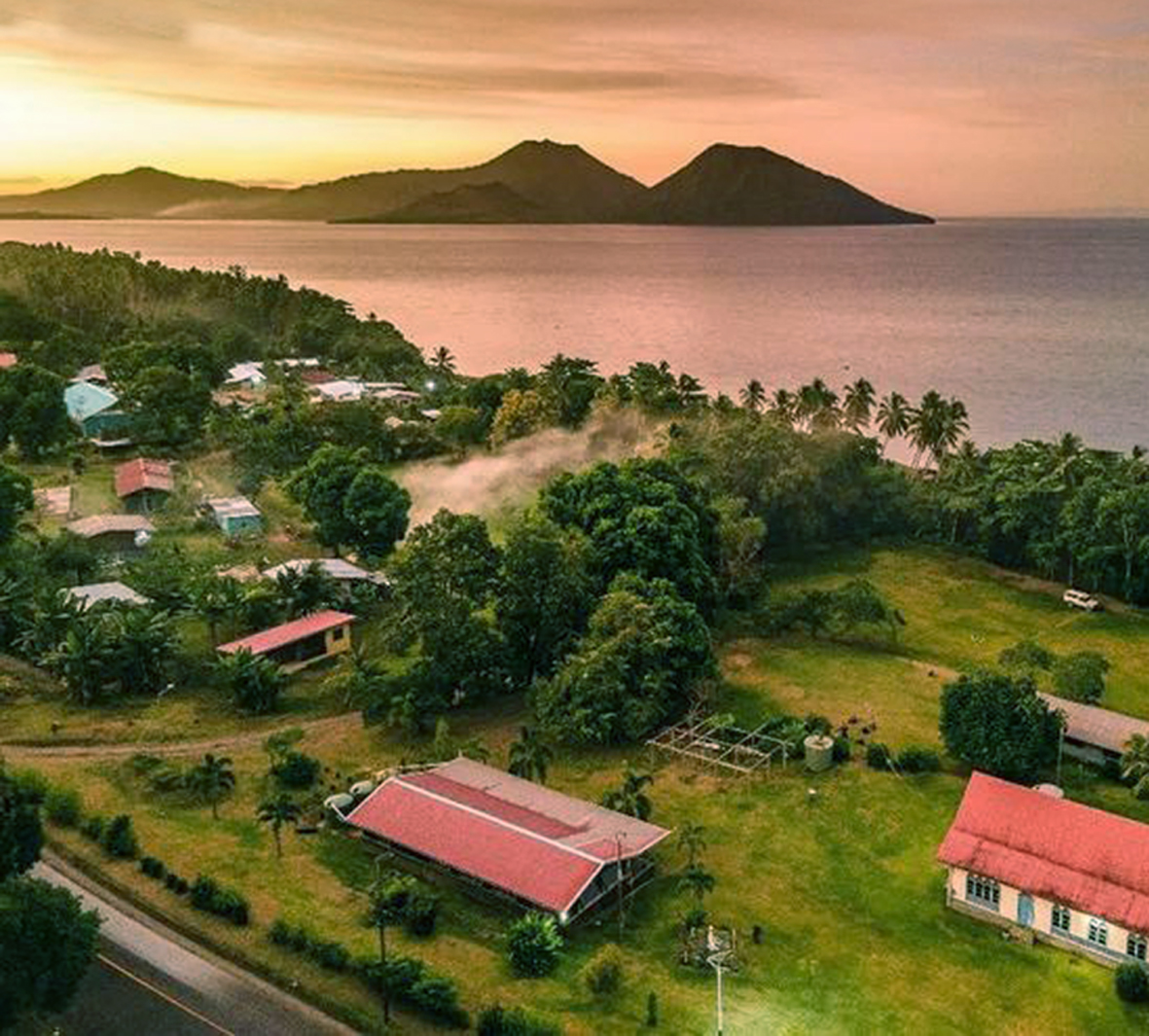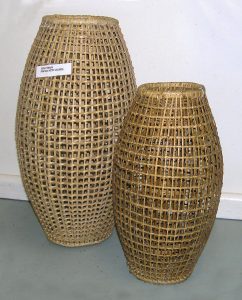The Fish Trap Builders of Raluana Village
John F Bent
Sixty years ago, I had the privilege of being employed by the Papua New Guinea Department of Agriculture, Stock and Fisheries as an agricultural extension officer. To my local colleagues and villagers, I was a didiman; a title believed to be descended from Herr Beidermann, the first director at Rabaul’s botanical gardens, who made a great impression on the people and his name was attached to all officers employed in the agricultural business.
It was a mighty interesting job as the administration was under pressure from the League of Nations to fast track the agricultural and business development of Papua New Guinea in preparation for independence from Australia. Other departments were also preparing for decolonisation. In the course of my work, I became enthralled by the country’s history and spent many hours in conversation with old men who had been boys when the Germans occupied New Guinea. These old men also recalled the stories they had heard from their grandfathers, from before the arrival of Europeans in the islands. This may seem fantastic to a modern reader, but my grandmother was born in 1878, so I was a fascinated listener to the tales they told. This account concerns the ancient art of building fish traps, but it digresses from time to time which I hope survives the editor’s bush knife.
Location
Raluana is a sprawling village on the Gazelle Peninsula of New Britain. Many of its people live high up on the cordillera that surrounds Blanche Bay. Others live along the shore but have gardens in the hills. They are excellent fishers and have developed techniques over the centuries that differ from villages with access to coral reefs. During the course of my investigations into the agricultural and maritime techniques of the people, I came across the ancient art of building fish traps. I was spear-fishing at night off Watom Island on the north coast and had joined fishermen along the beaches at Nonga and Pila Pila. There, an experienced herring fisher from Latvia was teaching fishers how his people used nets in the cold waters of the Baltic Sea. He too was fascinated by the local knowledge and was learning as much as he was sharing.
The People
The people of Gazelle Peninsula are Tolais. Some say they were immigrants from New Ireland who drove the indigenous inhabitants into the Baining Mountains. The Tolai are a vigorous and intelligent people who quickly adapted to the culture of Europeans arriving in the 19th century. I heard many stories that were handed down, but my primary focus in this article are the fishermen of Raluana. I was based at an agricultural department centre at Taliligap, a mile or so west of Raluana from 1962 to 1965. There are a string of villages along the ridge above Blanche Bay. My immediate neighbourhood started at Navuneram village, and then went through Malmaluan, Taliligap, Nanga Nanga, and Raluana.
As my interest in the history and culture became evident, people were eager to share their stories. One, told in the hushed tones of shame, was about a chief named Talili who arranged the murder of three Fijian missionaries at Taliligap. They were cannibals at the time and the shame of that crime exists today.
An employee of the department was a clerk name Gaius Lali. He was an elderly grey-haired man and a marvellous raconteur in his quiet way. Gaius became my close friend and confidante and it was through him that I met the fish trap builders along the shore of Blanche Bay. Most men of that group have the prefix ‘To’ to their name. The women have ‘Ia’, so if you were introduced to a man, his name might be Tolongbut, or a woman whose name might be Iambata.
Gaius invited me to join him at the beach one Sunday, and there I met his old snowy-haired friends. They were engaged in building a Tolai fish trap which I describe here. It is a dying art and worth recording. Gaius and his friends reminded me of old farmers I knew in Canada and the USA, who liked to congregate at Jimmy Taylor’s blacksmith shop, or a local garage where they could spin yarns and exchange gossip around the stove.
The Fish Trap
To picture a Tolai fish trap, imagine a giant rugby ball standing on end and reaching two and a half metres into the air. If you picture this big ball with the pointy ends pushed in, that is the shape of the trap. The girth of the ball, or diameter, is close to two metres. The frame is made of split bamboo lashed together with Kunda vines that were split to make string. Kunda is a climbing variety of Liana vine that grows in tropical rain forests. It is immensely strong and can be bent, plaited, and split into string. New Guineans are artists with this product. Many people are familiar with the famous Buka baskets.
The trap works on the same principle as a crow trap. The fish come in at the pointy ends of the ball, swim through the bars and then can’t find their way back out, including the way they came in.
On the frame and end funnels, finely split Kunda is woven into place creating an even mesh of about 30mm squares. Imagine the intricate patience and skill it takes to split and smooth the cane and then weave it into place over the frame. When it is finished it looks like a giant rugby ball and is very strong and flexible.
Deployment of the Trap
The harbour of Blanche Bay is a deep and broad extinct volcano with extinct and active volcanoes on the northside, and a cordillera of old volcano rims around the west and south. It is open to the east, but is protected by the ancient volcanic atolls of the Duke of York Islands.
When the trap is complete it would be loaded onto a large outrigger canoe and taken out to the bay. There it is tipped overboard and secured to a floating raft of bamboo poles. The trap is anchored in place with about 100 feet of lashed Kunda vines to make a strong hawser, and a large basket of rocks forming an anchor. In the side of the trap is a door made of lashed bamboo and Kunda mesh that is tied shut with more vines.
People familiar with tropical waters will have seen schools of baitfish boiling on the surface while larger fish, such as tuna, cobia and sharks, would swarm in to eat them. Seabirds would dive and swoop to also feed on them. In a desperate search for shelter, the little fish would swim into the funnels at each end of the trap only to be followed by the fish mentioned above, as well as Spanish Mackerel and Barracuda. The mesh is large enough for baitfish to escape, but not large enough for the target fish. These larger fish swim aimlessly to and fro like goldfish in a bowl but never think to escape through the bars in the centre.
Early in the mornings, Gaius and his friends would paddle out to their traps and briefly disconnect them from the float. They would roll the trap up onto the outrigger and position the door over the hull of the canoe. Then they would undo the latch string and the catch would tumble into the canoe. Then they would tie the door, reattaching it to the float, and head for shore with their catch. Once on land, they would sell some to the village, and take a pick-up truck into town to their Chinese customers who ran stores and restaurants. There was no haggling or dickering over price. Long-established prices ruled, and everyone was happy.
These ancient arts and trade are probably obsolete now as people have access to power boats and modern equipment, but the fish traps may still exist. On a split bamboo frame however, the intricate mesh has probably been replaced with fish netting and zip ties. But it is a unique and beautiful part of Blanche Bay’s history and the people of Raluana village.
Postscript on the Original Didiman
The curator of German New Guinea’s Botanic Gardens in Rabaul was a botanist who initiated many projects. The original cocoa trees at Aropa (Bougainville) were imported by the Germans. We used them as seed trees but, on the initiative of Leon Bridgland, we planted them at double spacing and then thinned them out as we identified the most prolific bearers.
I heard that the Giant Ficus Tree that grew along the Siang River through Aropa was promoted along river systems to prevent erosion in flood times.
Another famous didiman was Francis Xavier Ryan, who was the early promoter of the Tolai Cocoa Project which had a huge economic impact on the Gazelle Peninsula.




